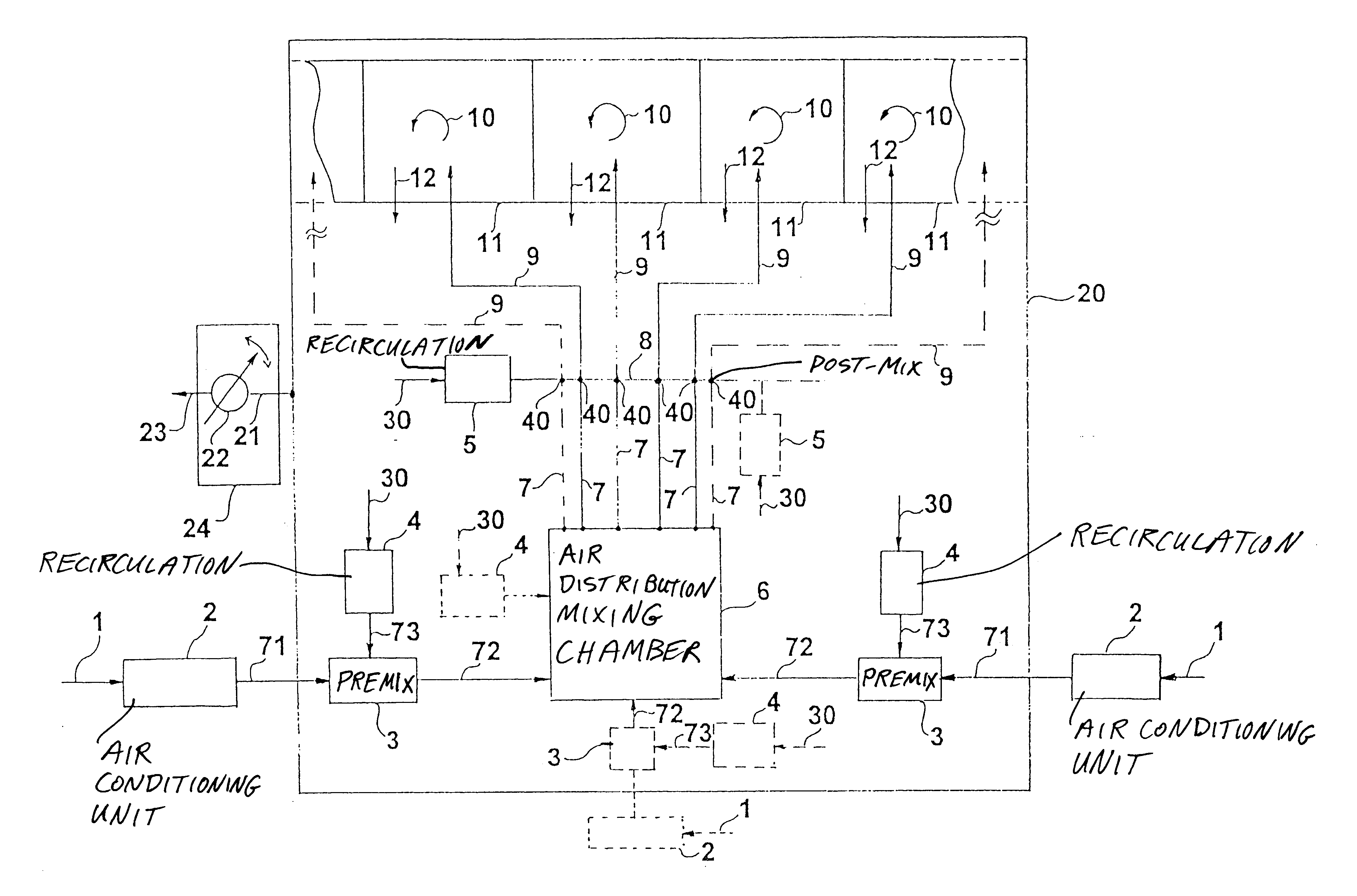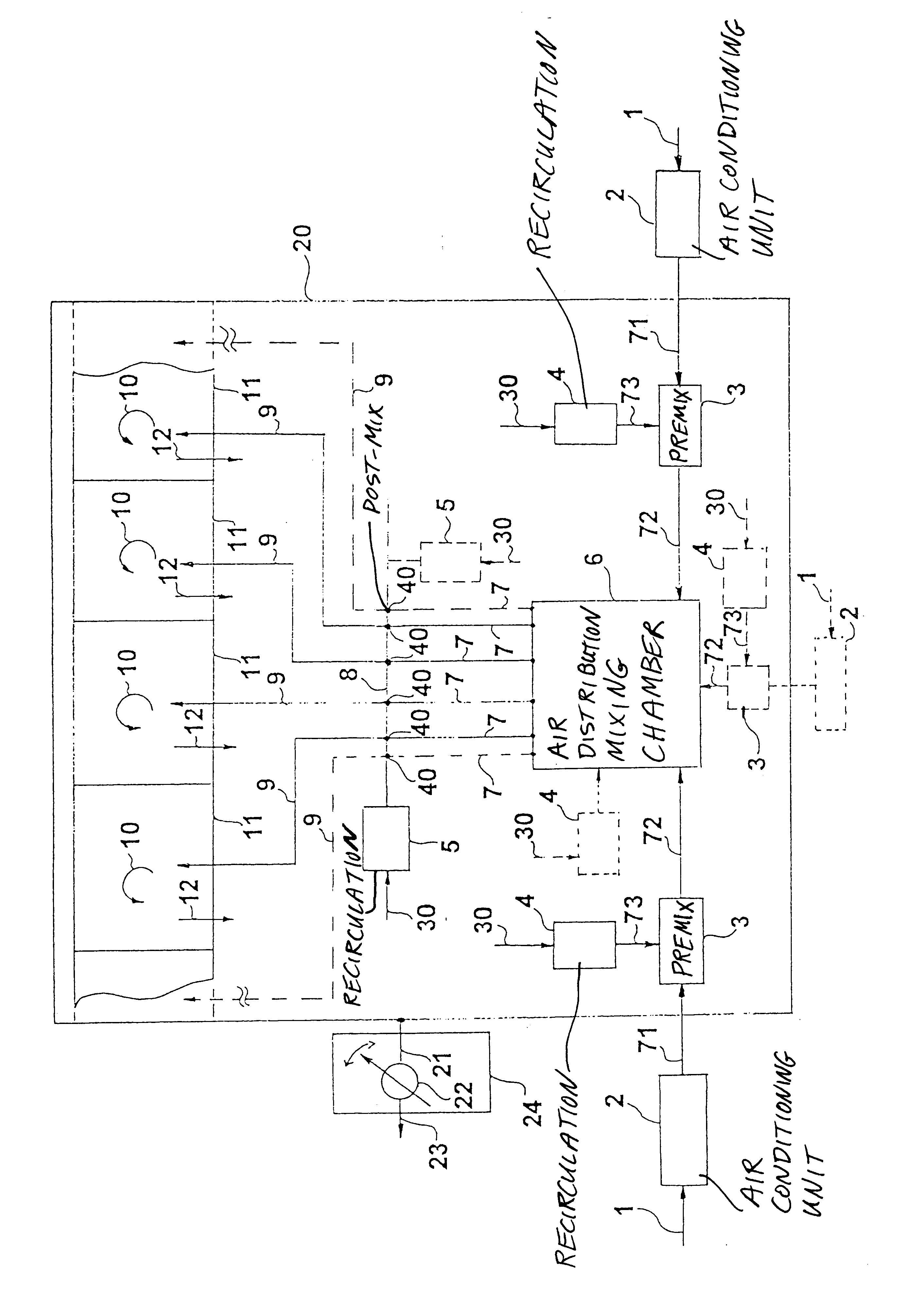High capacity air conditioning system with redundant staged recirculation air mixing for an aircraft
a technology of air conditioning system and air mixing, which is applied in the direction of domestic cooling apparatus, heating types, separation processes, etc., can solve the problems of uncontrollable liquid puddling and/or leakage, discomfort or health risks for passengers, and consume an undetected high quantity of engine bleed air for cooling the passenger air conditioning zon
- Summary
- Abstract
- Description
- Claims
- Application Information
AI Technical Summary
Benefits of technology
Problems solved by technology
Method used
Image
Examples
Embodiment Construction
Developing further from the above described conventional considerations or solutions for addressing the problem of icing in air ducts or air lines of air conditioning systems in aircraft, the present invention is based on the consideration that the icing prevention for the air lines of the air conditioning system must be provided directly downstream of the air outlet of each air conditioning unit, or particularly immediately after or down-stream of the point at which each cooling air supply line penetrates into the pressurized fuselage of the aircraft. Namely, the invention provides an initial or preliminary pre-mixing of warm recirculated fuselage interior air with the cold air provided by the respective air conditioning unit in order to reliably prevent ice formation in all air conditioning system components and particularly all air lines downstream of the initial pre-mixing unit, at all possible temperatures of the cooling air provided at the outlet of the respective air conditio...
PUM
| Property | Measurement | Unit |
|---|---|---|
| freezing point | aaaaa | aaaaa |
| temperature | aaaaa | aaaaa |
| pressure | aaaaa | aaaaa |
Abstract
Description
Claims
Application Information
 Login to View More
Login to View More - R&D
- Intellectual Property
- Life Sciences
- Materials
- Tech Scout
- Unparalleled Data Quality
- Higher Quality Content
- 60% Fewer Hallucinations
Browse by: Latest US Patents, China's latest patents, Technical Efficacy Thesaurus, Application Domain, Technology Topic, Popular Technical Reports.
© 2025 PatSnap. All rights reserved.Legal|Privacy policy|Modern Slavery Act Transparency Statement|Sitemap|About US| Contact US: help@patsnap.com


